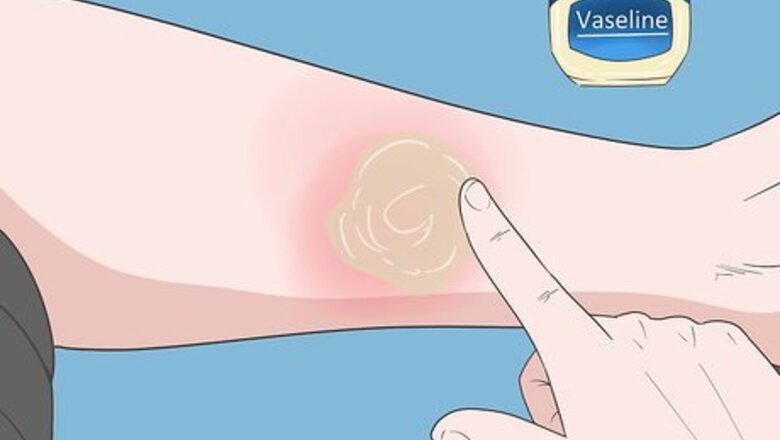
views
X
Trustworthy Source
Mayo Clinic
Educational website from one of the world's leading hospitals
Go to source
See a doctor to get a diagnosis and treatment plan and be sure to follow their instructions. While you're waiting for the cellulitis to heal, cover the area to keep it clean.
Using Petroleum Jelly and a Bandage

Rub a thin layer of petroleum jelly over the infected area. Wash your hands thoroughly and scoop out a small amount of petroleum jelly, or enough to cover the affected area. Use your fingers to apply a thin coating of jelly, which will serve as a protective layer over the wound. If you’re dealing with a small case of cellulitis, you may only need a pea-sized amount of petroleum jelly. If your case is more severe, you may need a grape-sized amount, or larger.

Cover the lubricated spot with gauze or a non-stick bandage. Take a sterile bandage or gauze that’s large enough to cover the affected portion of skin. To further protect the wound, wrap the bandage loosely around the petroleum jelly. Don’t use band-aids or adhesive bandages, as these will irritate your infected skin.
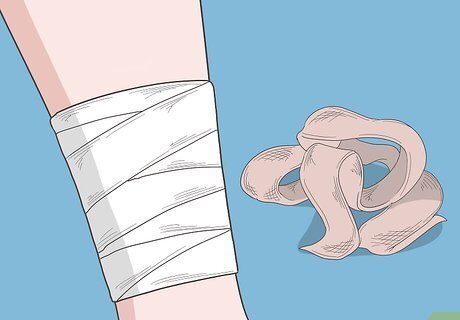
Change your bandage and dressing on a daily basis. Find a time throughout the day to unwrap and discard your used bandage. If the cellulitis hasn’t healed yet, use your fingers to apply another thin layer of petroleum jelly over the surface of the skin. After this, cover the petroleum jelly with a non-stick bandage or section of gauze.Tip: If you have specific questions about bandaging the infected skin, or any part of the healing process, contact a healthcare professional for assistance.

Stop covering the cellulitis once a scab forms on the skin. Monitor your skin each day to see if the skin has healed at all. If the affected area looks scabbed over, you no longer need to put petroleum jelly and bandages over the area.
Caring for the Affected Skin
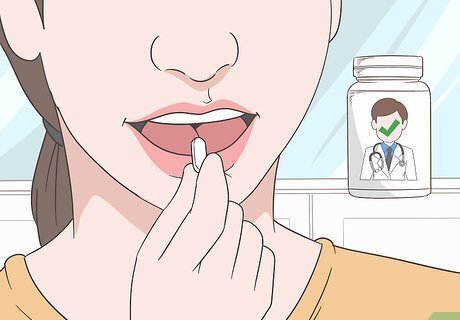
Take antibiotics if your doctor prescribes them. Visit your local pharmacy to pick up your regimen of antibiotics. Most antibiotic treatments come in pill form, with the treatments lasting for a few days up to 2 weeks. Continue taking the medication, even if the affected area starts to feel better. If you stop taking the antibiotics midway, the bad bacteria might become resistant to future medication. If you don’t want to take pills, ask your doctor if antibiotic cream could be an option for your specific case of cellulitis.

Rest the infected area on an elevated surface above your heart. Find a comfortable place to sit, like a bed or sofa. Prop the affected area up on a table or other high surface, which can make the injury hurt and swell less severely. Consider placing a folded towel or pillow beneath the affected area.

Rinse out the affected area with clean water twice each day. Unwrap the bandage from your skin, then turn on your faucet or tub tap to a cool setting. Place the infected skin beneath the water and clean off the entire surface of the wound to prevent the cellulitis from getting any worse. Let the area air-dry, then apply a layer of petroleum jelly and a fresh bandage. To create a consistent schedule, rinse the affected area off in the morning and before you go to bed.Warning: Never use hydrogen peroxide or any type of rubbing alcohol to clean or rinse off your affected skin, as this could make the infection last longer.
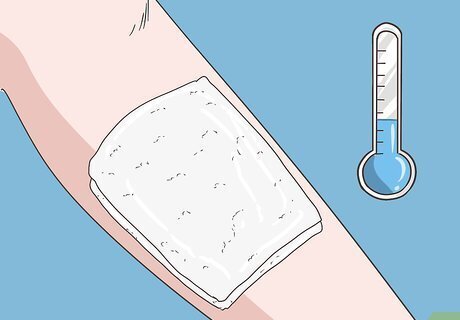
Place a cool, wet cloth on the area to soothe any discomfort. Soak a cloth with cool water, then wring it out and arrange it over the wound. Use these compresses as often as you need, or whenever the skin feels sore and irritated.













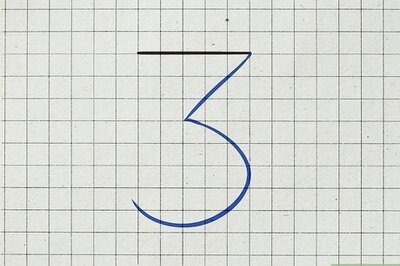


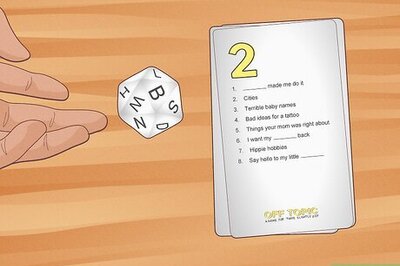



Comments
0 comment